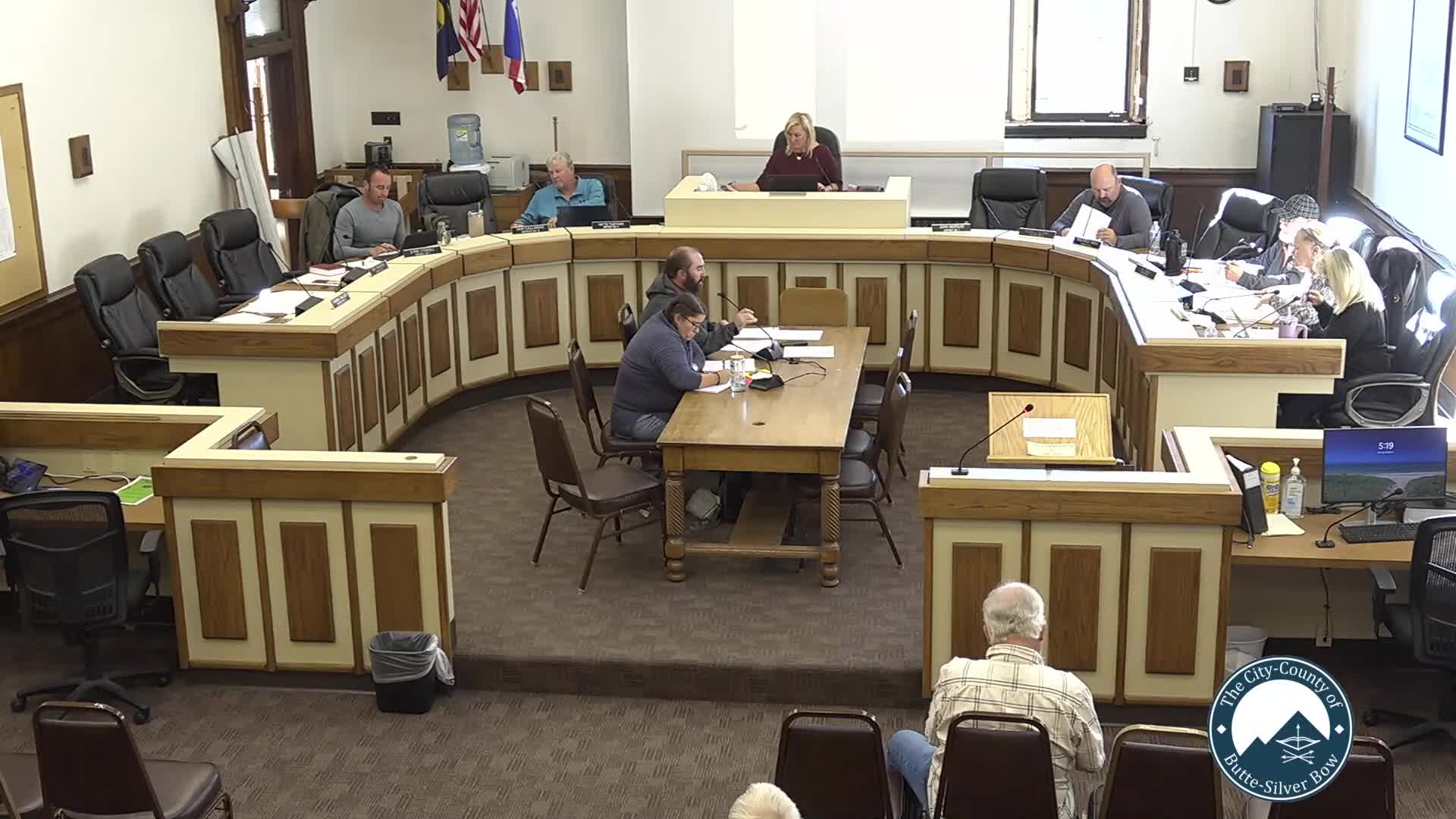Study commission told state law limits charter ballot items to one question with up to three suboptions
October 07, 2025 | Silver Bow County, Montana
This article was created by AI summarizing key points discussed. AI makes mistakes, so for full details and context, please refer to the video of the full meeting. Please report any errors so we can fix them. Report an error »

County Attorney Matt Enruth told the Butte‑Silver Bow Local Government Study Commission on Oct. 6 that state statute constrains what the commission may submit to voters, and he urged commissioners to read the memoranda and email examples he provided from Ravalli County. "A study commission's recommendation of an alternative form or plan of government must be submitted to the voters, as an election conducted under section 149," Enruth said as he walked commissioners through the relevant Montana Code sections.
The guidance matters because commissioners had been discussing multiple possible charter changes, including the method for selecting a county chief executive, whether to redraft the entire charter and the number and terms of commissioners. Enruth summarized the statutory framework: the study commission may draft a charter or submit amendments, but when placed on the ballot the proposal is constrained by petition‑law structure and, by his reading, the commission can effectively present one ballot question with up to three suboptions and no more than two alternatives per suboption.
Commissioners pressed Enruth on how to interpret older practice. Commissioner Dan Dennehy asked whether the seven ballot items that appeared on the 2006 ballot violated state law under today's statutes; Enruth replied he could not reach a final determination without checking older legal resources and that the statutory language appears to have changed since 2006. "I don't have an answer for that, Commissioner Dennehy, specifically because when you look at that, the 2006 law is approximately 20 years old," Enruth said, adding he may need to consult a law library for older materials.
Some commissioners said a full charter rewrite could avoid the three‑item limit because a redrafted charter would be a single cohesive document presented to voters; Enruth said his office was still researching whether and how a newly drafted charter could be presented on a ballot and that he and staff would provide a firm answer by the commission's Oct. 20 meeting. Commissioner Cindy Perdue Dolan and others urged the commission to weigh whether to use limited ballot questions or pursue a complete charter rewrite given the age of the current document.
The discussion also covered procedure and sequencing: Enruth noted the study commission can draft a new charter and that the legal question is how it must be presented to voters. He said he and his colleague would work on ballot language and provide additional guidance ahead of the next meeting. No formal action to adopt ballot language or draft options was taken at the Oct. 6 meeting; commissioners agreed to await the county attorney's written opinion and to continue public outreach and research before finalizing recommendations to voters.
Looking ahead, Enruth said he and staff would deliver a clarified legal opinion by the commission's Oct. 20 meeting, and commissioners planned further research on models (including Ravalli County and past local study‑commission work) to decide whether to pursue limited ballot amendments or a full charter rewrite.
The guidance matters because commissioners had been discussing multiple possible charter changes, including the method for selecting a county chief executive, whether to redraft the entire charter and the number and terms of commissioners. Enruth summarized the statutory framework: the study commission may draft a charter or submit amendments, but when placed on the ballot the proposal is constrained by petition‑law structure and, by his reading, the commission can effectively present one ballot question with up to three suboptions and no more than two alternatives per suboption.
Commissioners pressed Enruth on how to interpret older practice. Commissioner Dan Dennehy asked whether the seven ballot items that appeared on the 2006 ballot violated state law under today's statutes; Enruth replied he could not reach a final determination without checking older legal resources and that the statutory language appears to have changed since 2006. "I don't have an answer for that, Commissioner Dennehy, specifically because when you look at that, the 2006 law is approximately 20 years old," Enruth said, adding he may need to consult a law library for older materials.
Some commissioners said a full charter rewrite could avoid the three‑item limit because a redrafted charter would be a single cohesive document presented to voters; Enruth said his office was still researching whether and how a newly drafted charter could be presented on a ballot and that he and staff would provide a firm answer by the commission's Oct. 20 meeting. Commissioner Cindy Perdue Dolan and others urged the commission to weigh whether to use limited ballot questions or pursue a complete charter rewrite given the age of the current document.
The discussion also covered procedure and sequencing: Enruth noted the study commission can draft a new charter and that the legal question is how it must be presented to voters. He said he and his colleague would work on ballot language and provide additional guidance ahead of the next meeting. No formal action to adopt ballot language or draft options was taken at the Oct. 6 meeting; commissioners agreed to await the county attorney's written opinion and to continue public outreach and research before finalizing recommendations to voters.
Looking ahead, Enruth said he and staff would deliver a clarified legal opinion by the commission's Oct. 20 meeting, and commissioners planned further research on models (including Ravalli County and past local study‑commission work) to decide whether to pursue limited ballot amendments or a full charter rewrite.
View full meeting
This article is based on a recent meeting—watch the full video and explore the complete transcript for deeper insights into the discussion.
View full meeting
